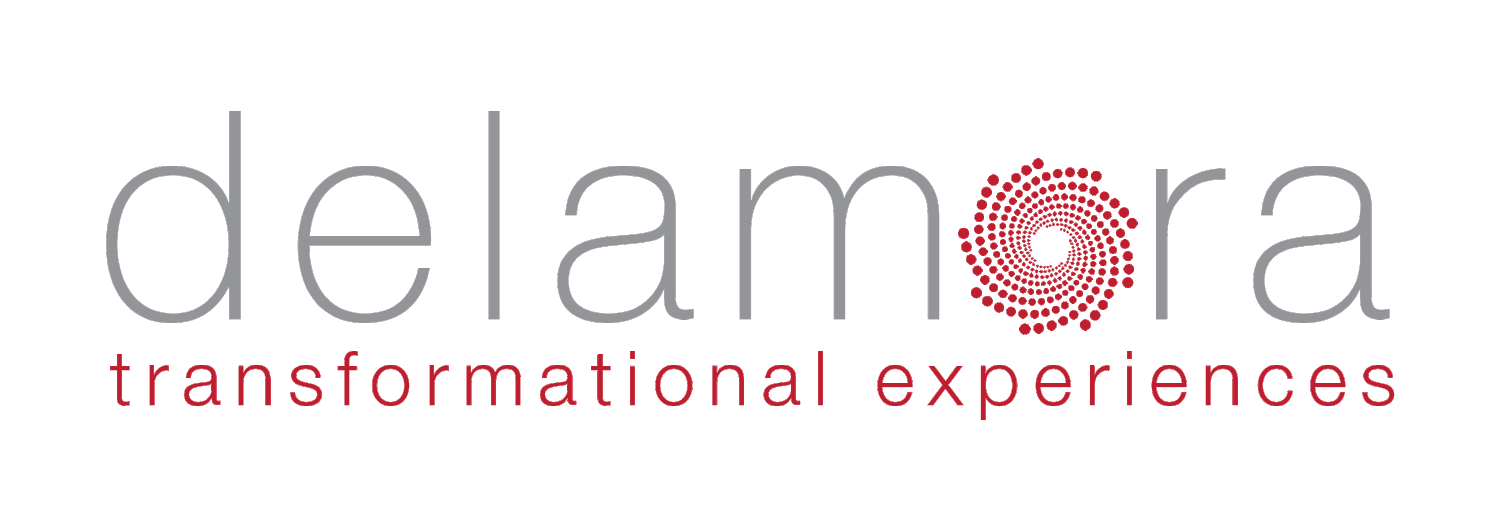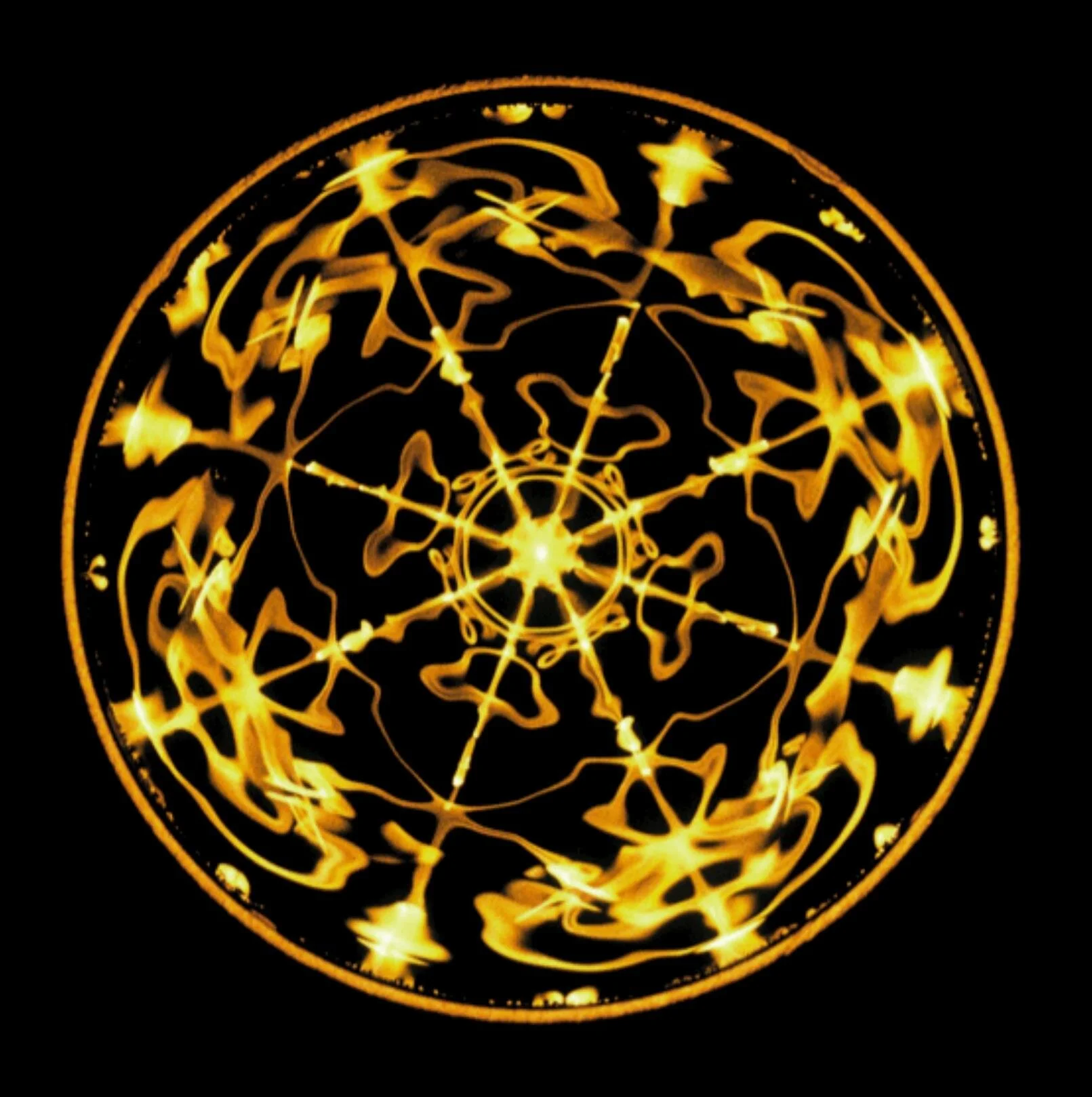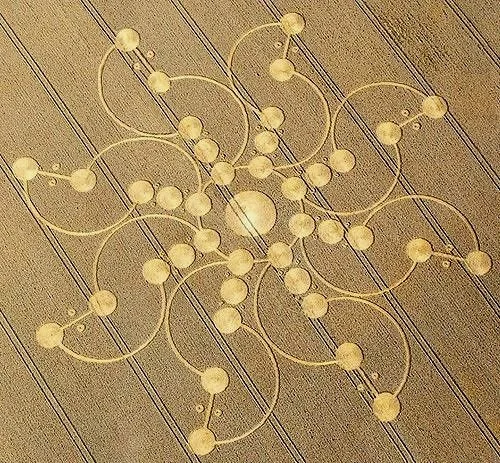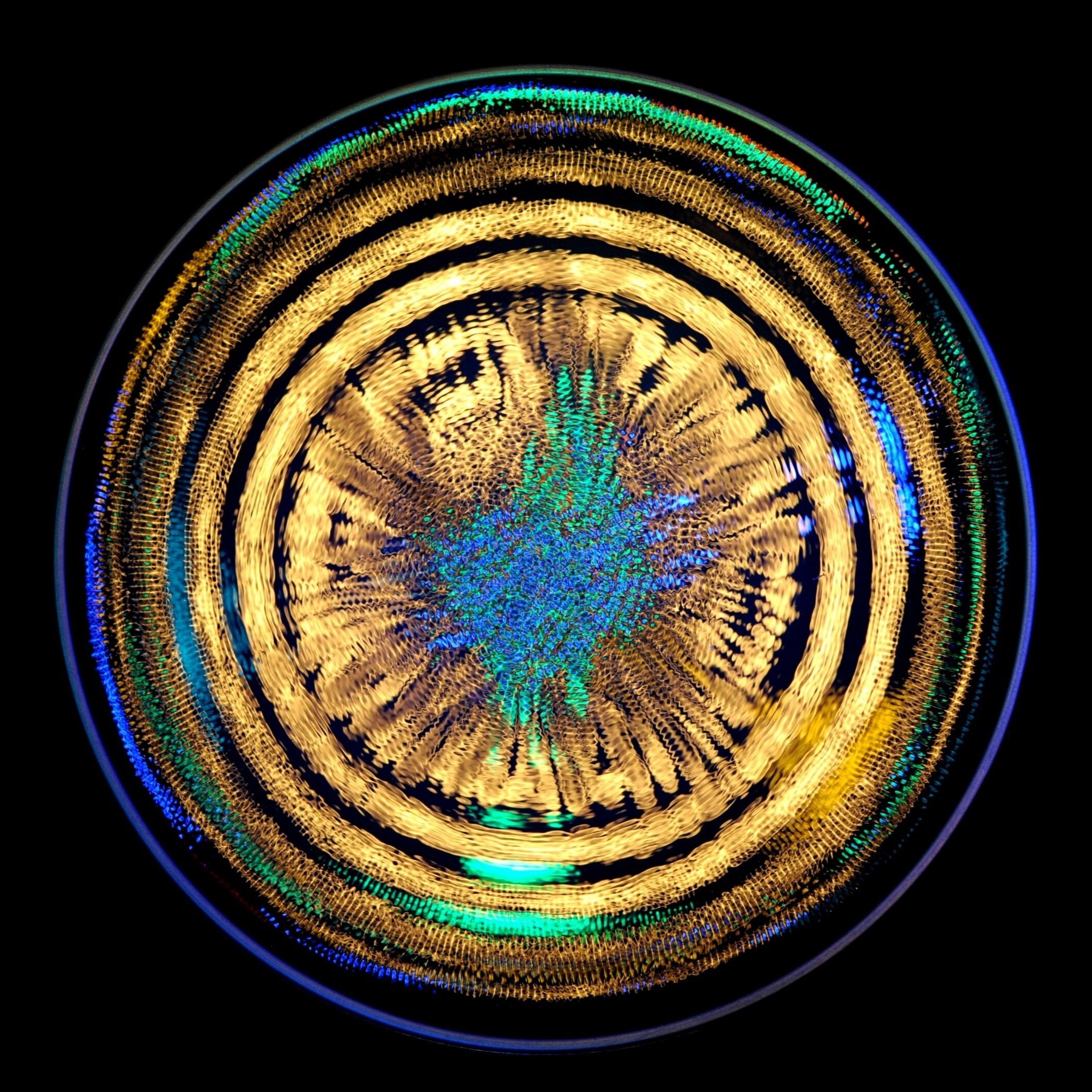
Cymatics
Cymatics vividly demonstrates how sound influences matter and molecular structure
Water being a strong conductor for sound, imagine how sound affects your ‘inner workings’ and how it can assist rearranging dissonance = dis-ease into patterns of a natural state of coherence, as shown in these images of cymatic patterns.
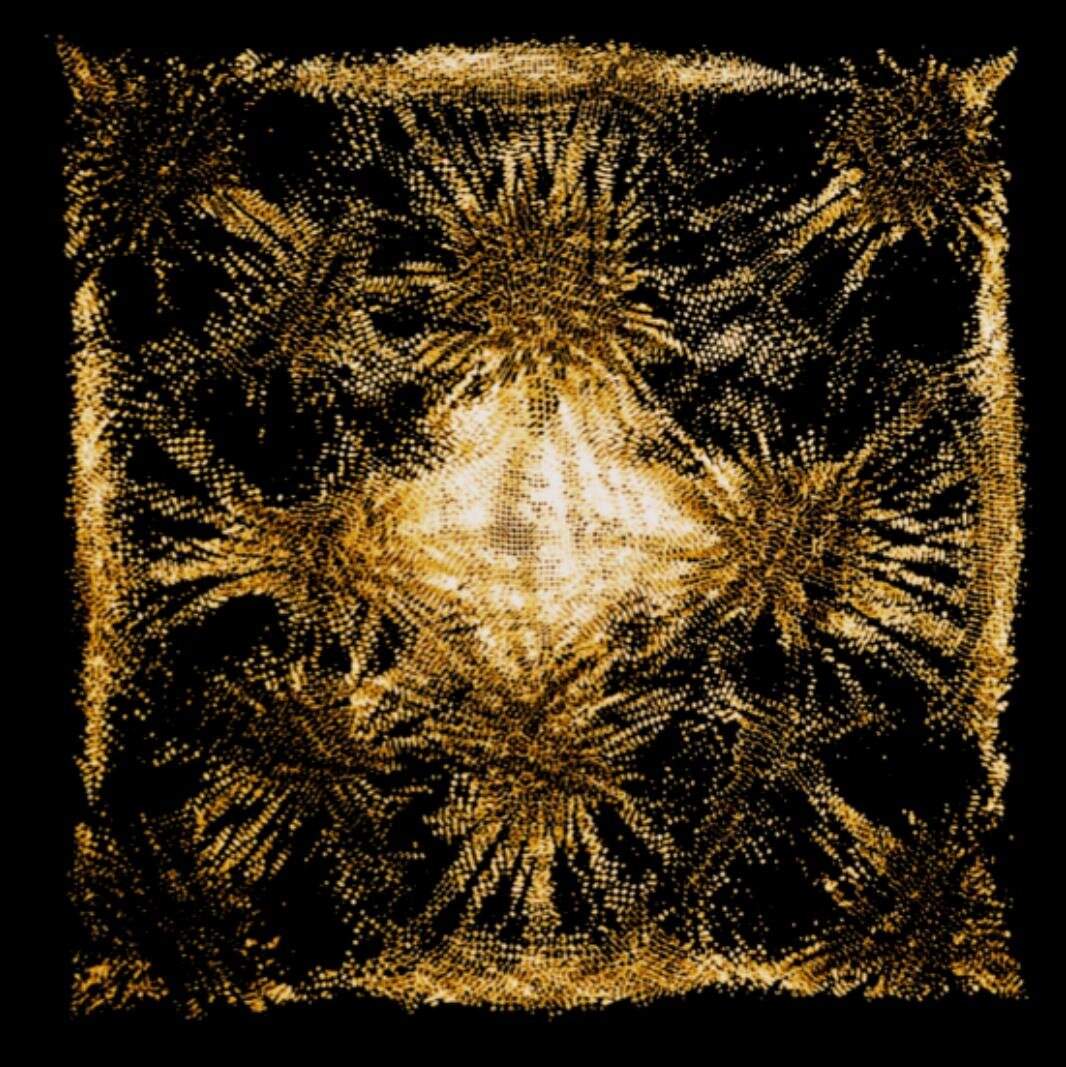
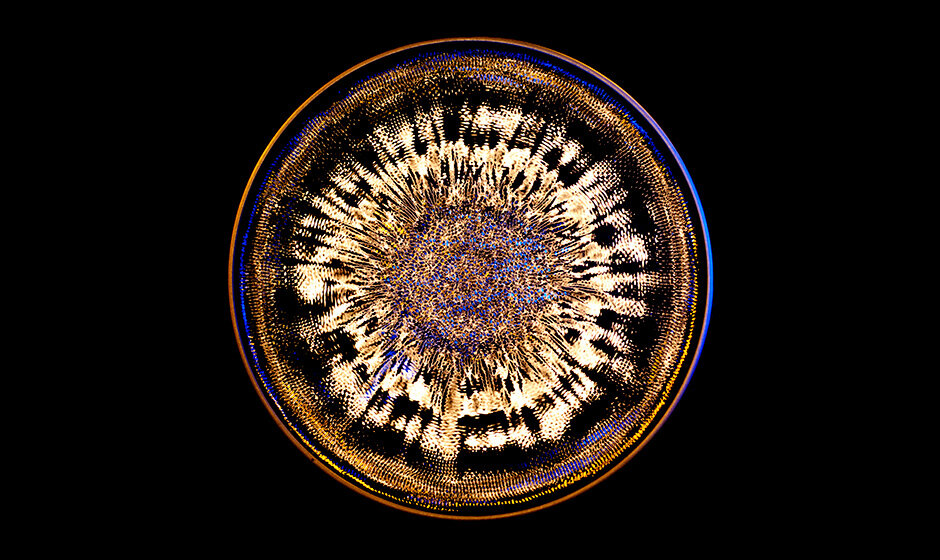
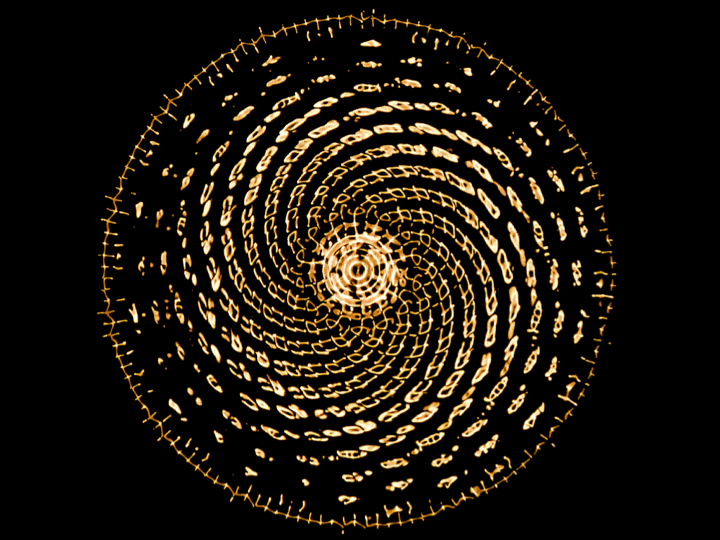
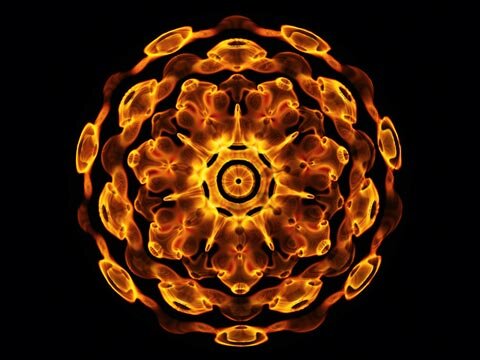
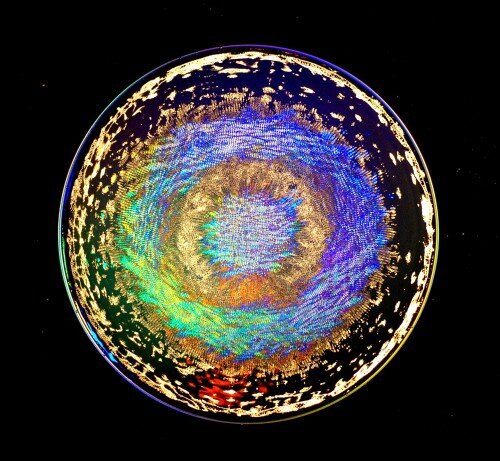
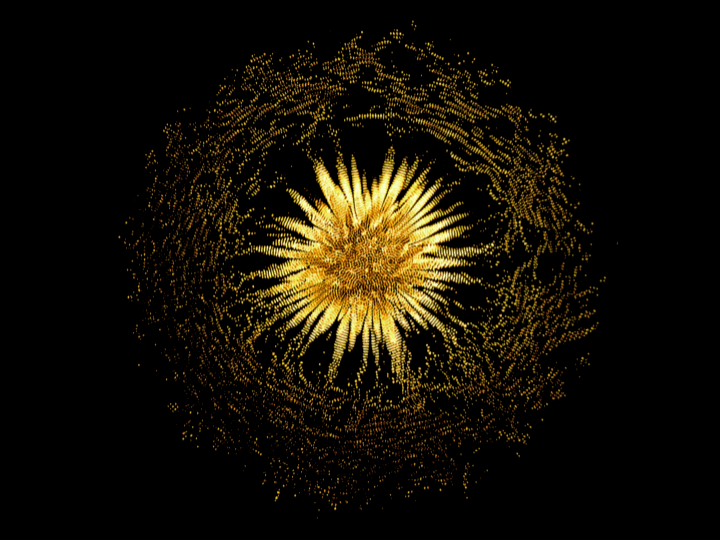

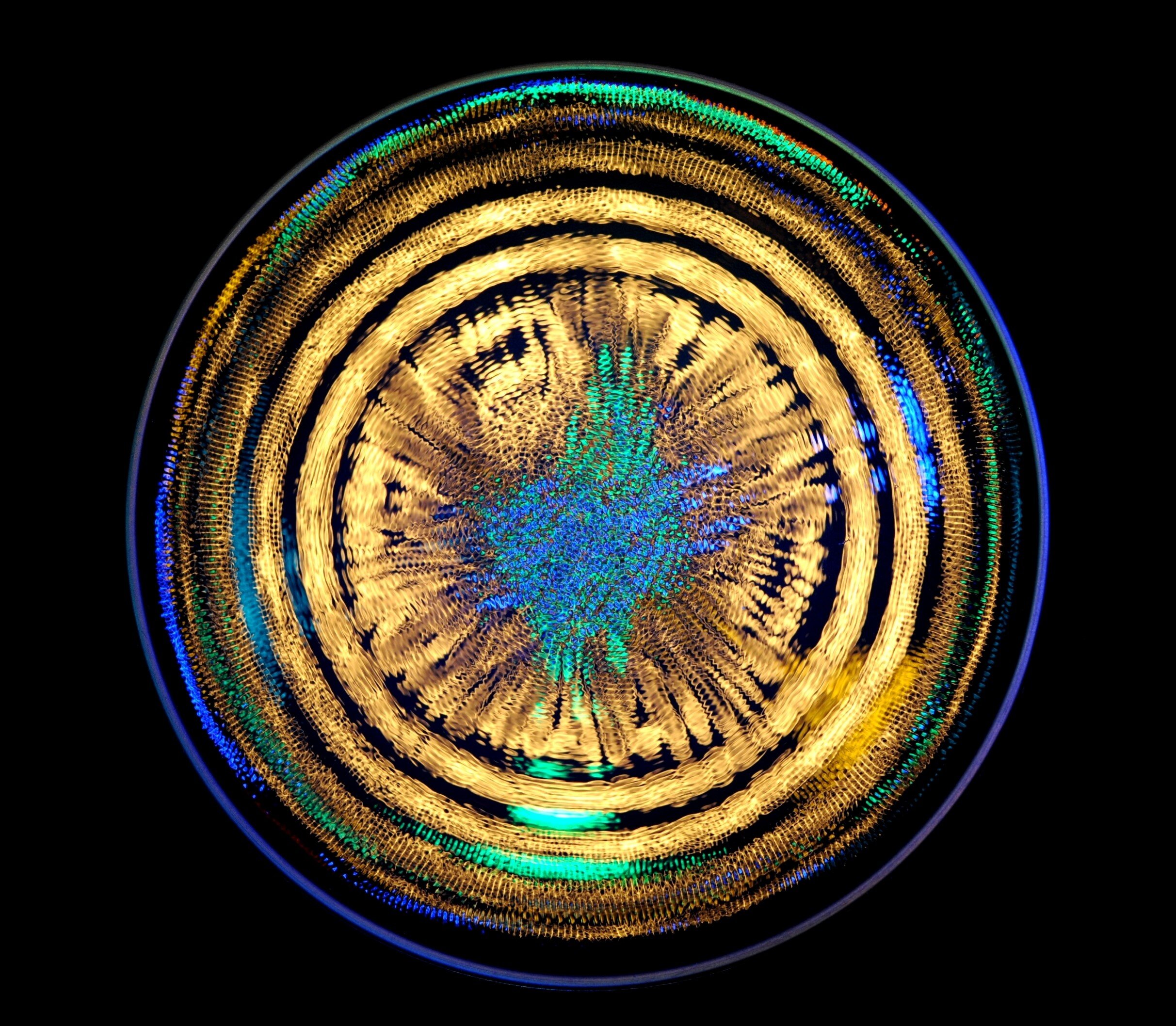
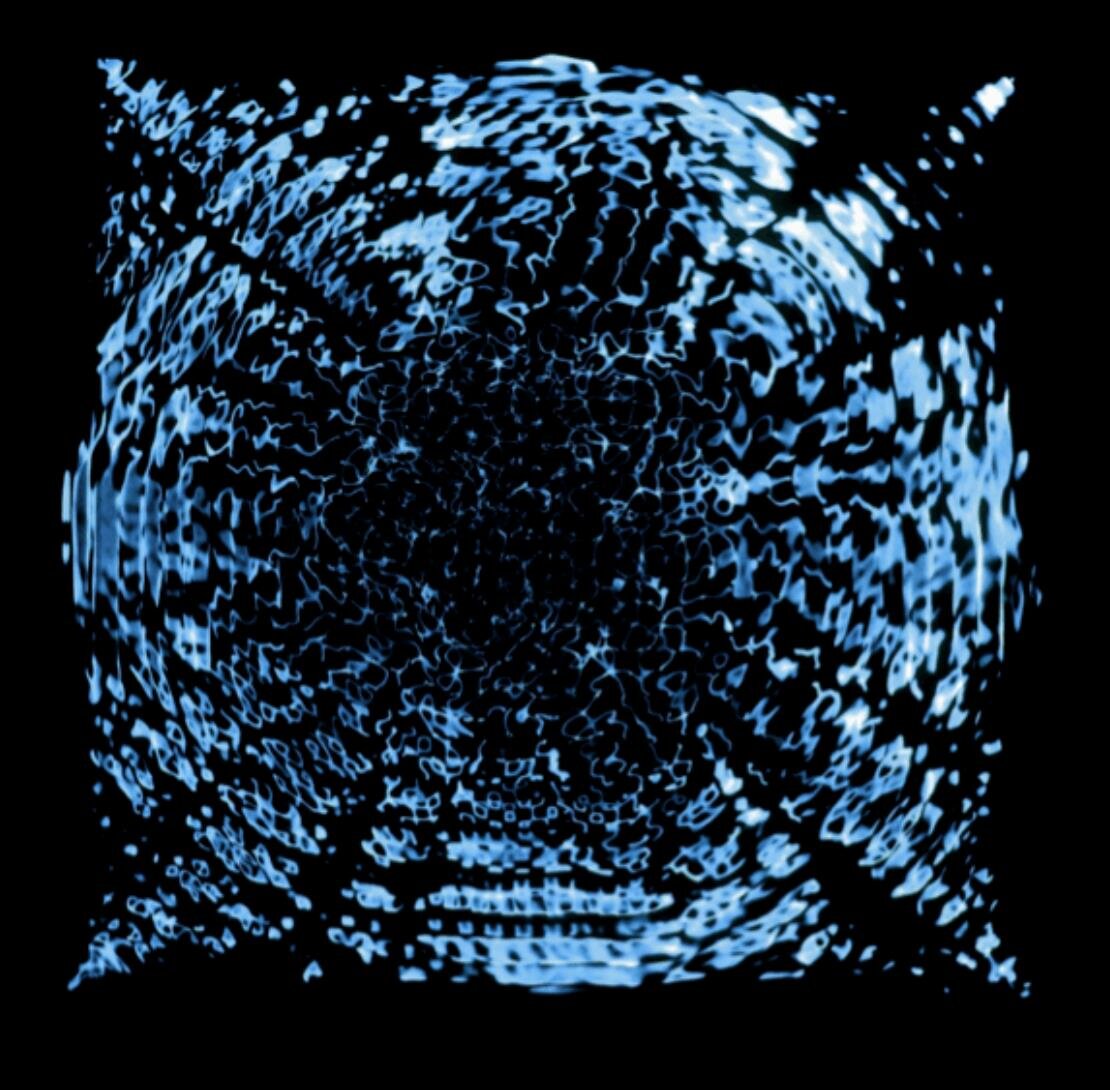
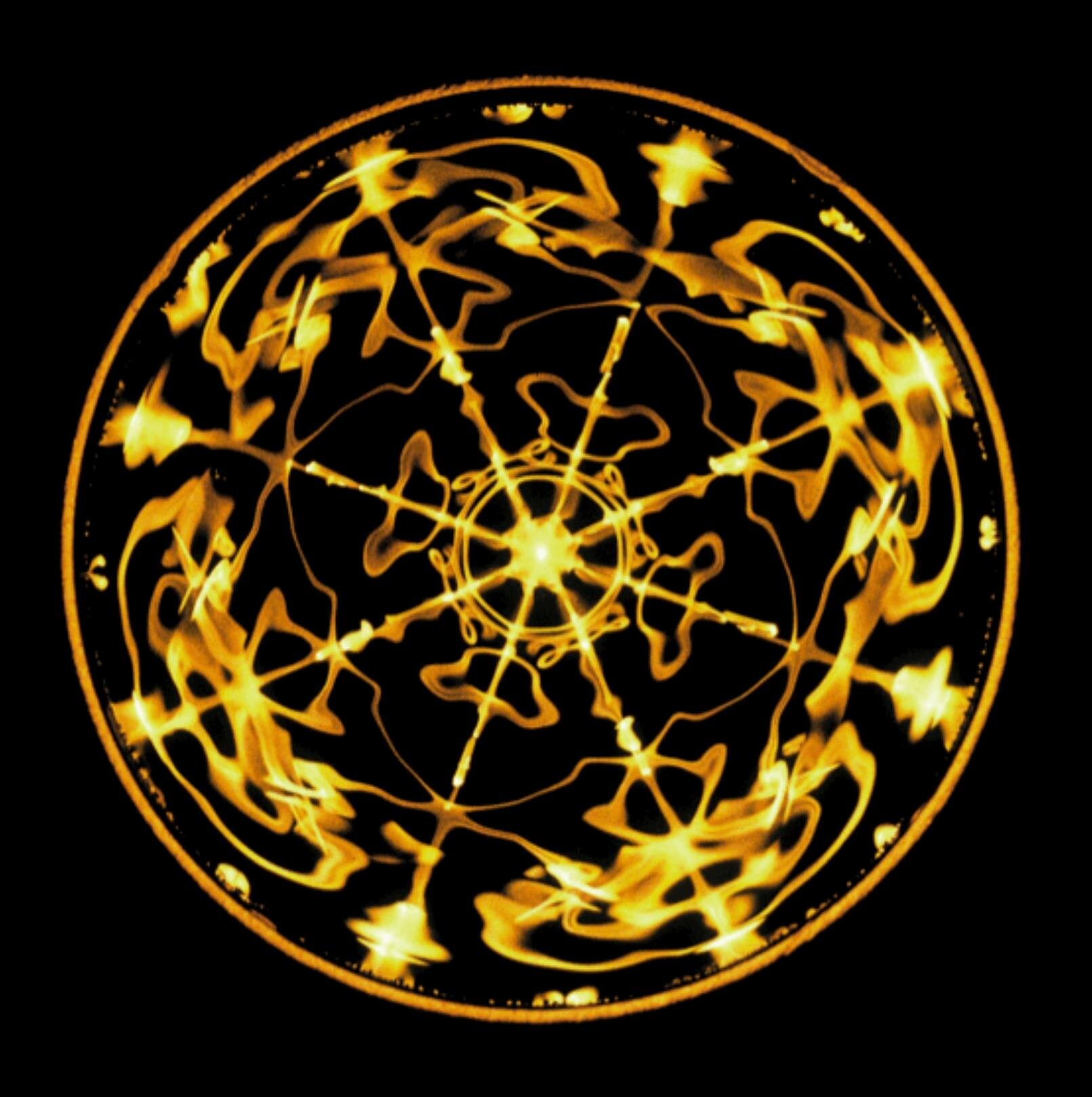
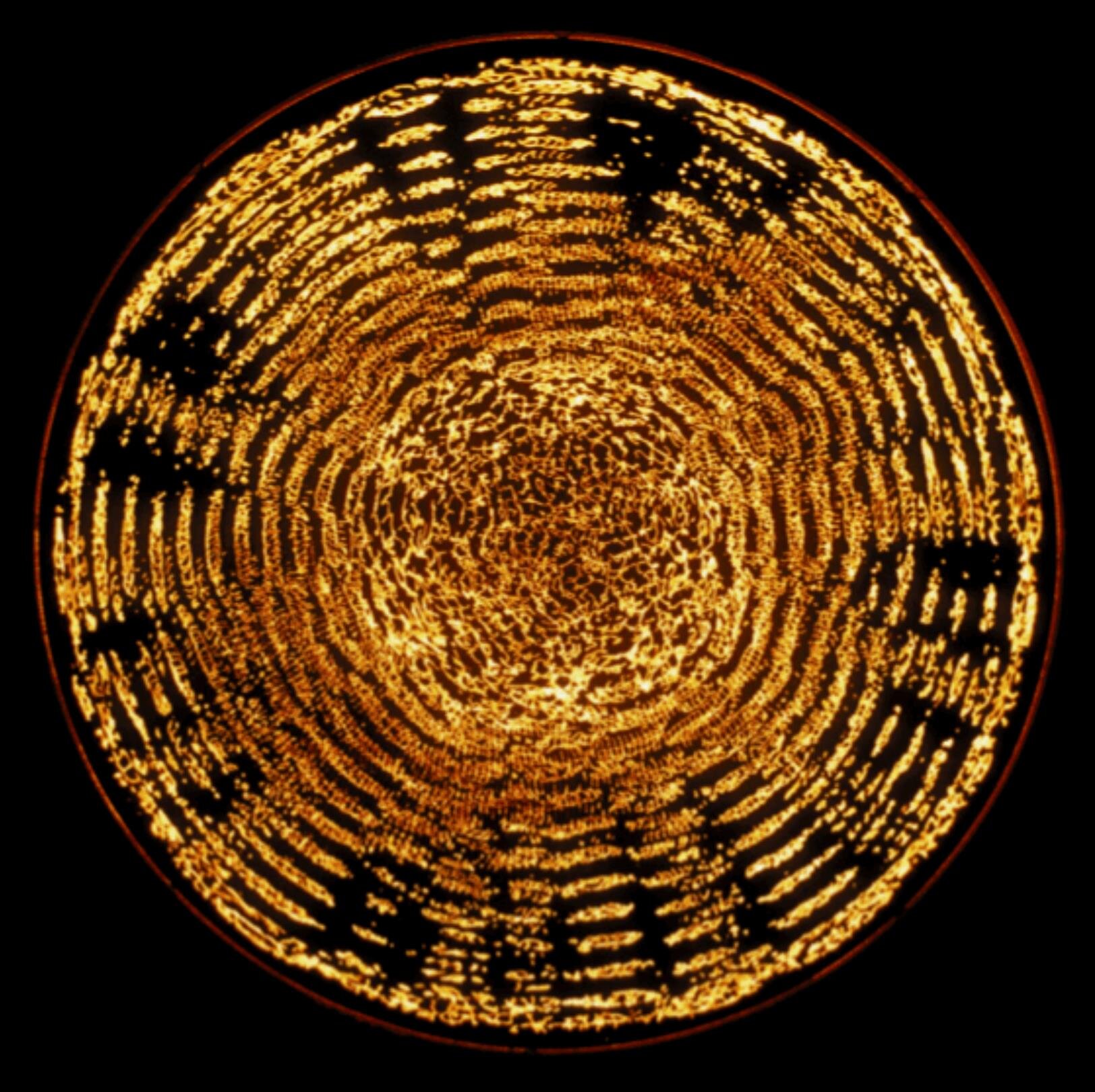

Cymatics is the study of visible sound and vibration, a subset of modal phenomena
The generic term for this field of science was retitled Cymatics by Hans Jenny, a Swiss medical doctor and a pioneer in this field. The word Cymatics derives from the Greek ‘kuma’ meaning ‘billow’ or ‘wave,’ to describe the periodic effects that sound and vibration have on matter.
Discovered over three centuries ago
Cymatics nicely displays the effects of vibration on matter. The study of patterns produced by vibrating bodies has a venerable history. One of the earliest to record that an oscillating body displayed regular patterns was Galileo Galilei who in 1632 wrote:
“As I was scraping a brass plate with a sharp iron chisel in order to remove some spots from it and was running the chisel rather rapidly over it, I once or twice, during many strokes, heard the plate emit a rather strong and clear whistling sound: on looking at the plate more carefully, I noticed a long row of fine streaks parallel and equidistant from one another.
Scraping with the chisel over and over again, I noticed that it was only when the plate emitted this hissing noise that any marks were left upon it; when the scraping was not accompanied by this sibilant note there was not the least trace of such marks.”
Patterns made visible with a violin bow
On July 8, 1680, Robert Hooke, an English scientist, architect, and polymath, who, using a microscope, was the first to visualize a micro-organism, was able to see the nodal patterns associated with the modes of vibration of glass plates as he ran a bow along the edge of a glass plate covered with flour, and saw the nodal patterns emerge.
Ernst Florens Friedrich Chladni was a German physicist and musician. His most important work, for which he is sometimes labeled the father of acoustics, included research on vibrating plates and the calculation of the speed of sound for different gases. In 1787 he repeated the work of Robert Hooke and published “Entdeckungen über die Theorie des Klanges” (“Discoveries in the Theory of Sound”). In this book, Chladni describes the patterns seen by placing sand on metal plates which are made to vibrate by stroking the edge of the plate with a bow.
Bringing matter to life with sound
Throughout the 1960s, up until his death in 1972, Swiss medical doctor and Anthroposophist, Hans Jenny took a methodological and exhaustive approach to documenting Cymatic phenomena. He coined the term “Cymatics” in his 1967 book, Kymatik (translated Cymatics).
Visual display of sound
Inspired by systems theory and the work of Ernst Chladni, Jenny delved deeply into the many types of periodic phenomena but especially the visual display of sound. He pioneered the use of laboratory grown piezoelectric crystals, which were quite costly at that time. Hooking them up to amplifiers and frequency generators, the crystals functioned as transducers, converting the frequencies into vibrations that were strong enough to set the steel plates into resonance.
Innovation
He made the resultant nodal fields visible by spreading a fine powder lycopodium spores of a club moss, as well as many other methods and materials. He documented much of his work in still photos which were compiled into two volumes published in 1967 and 1972, and republished in 2001 as a single hardcover edition. He also documented his experiments in 16mm films which have since been re-released on a DVD entitled Cymatic SoundScapes: Bringing Matter to Life with Sound.
Cymatics - visual magic
Alexander Lauterwasser (born 1951, Überlingen), a German researcher and photographer based his work on work done by Ernst Chladni and Hans Jenny in the field of Cymatics and published his book Wasser Klang Bilder (Water Sound Images) in 2002.
The 176 page book features imagery of water surfaces set into motion by sound sources ranging from pure sine waves to music by Ludwig van Beethoven, Karlheinz Stockhausen and even overtone chanting.
The english version of the book “Water Sound Images” is available in the US through MACROmedia Publishing.
Several of the top page images were masterfully photographed by Mr. Lauterwasser and show the effects of sound on water (used with permission from publisher).
Also available there are videos which incorporate and expound on the original footage of Dr. Hans Jenny’s experiments, as seen below.
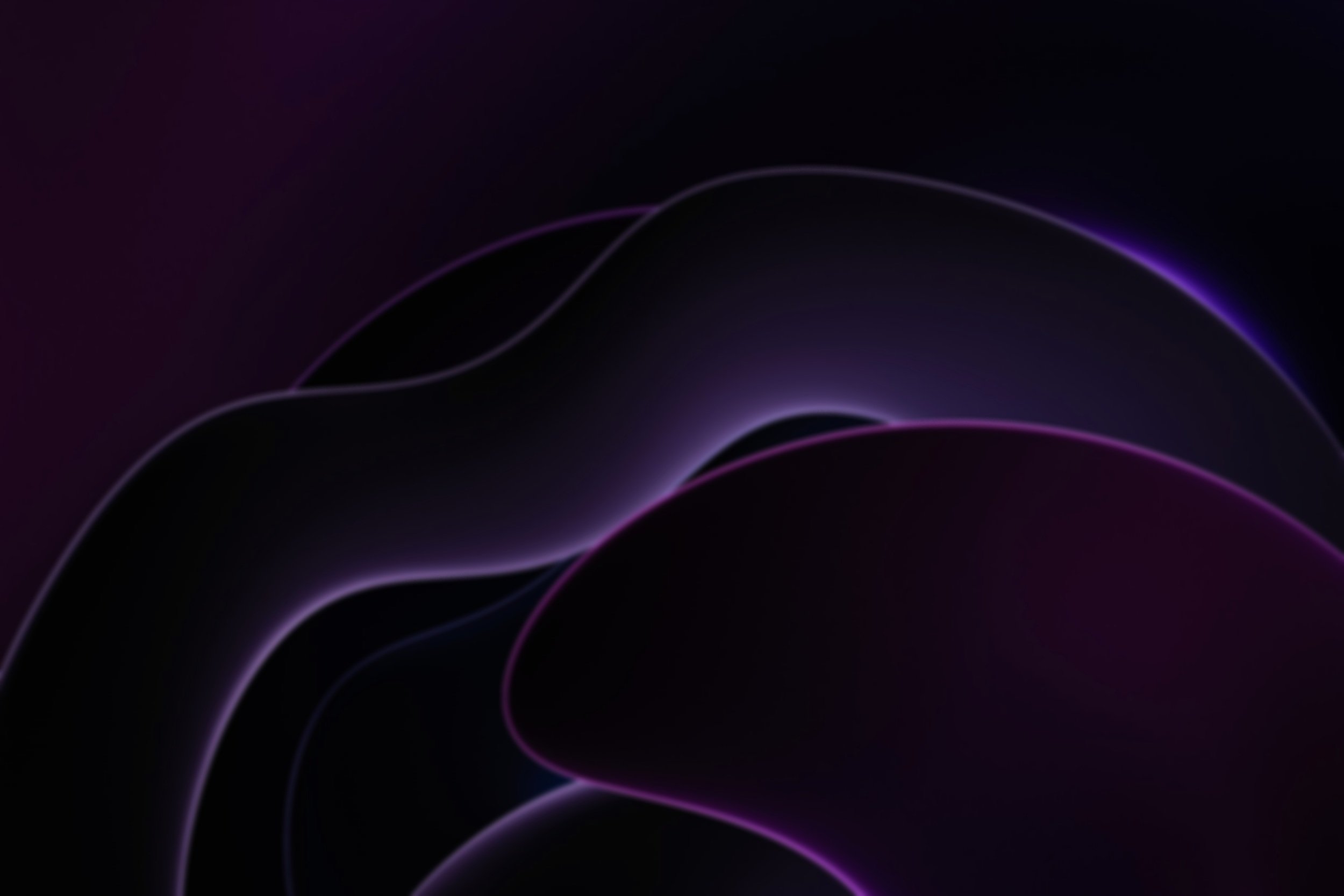
Commonalities of Cymatics, Crop Circles and Gongs
Find out more about the strikingly similar characteristics between them
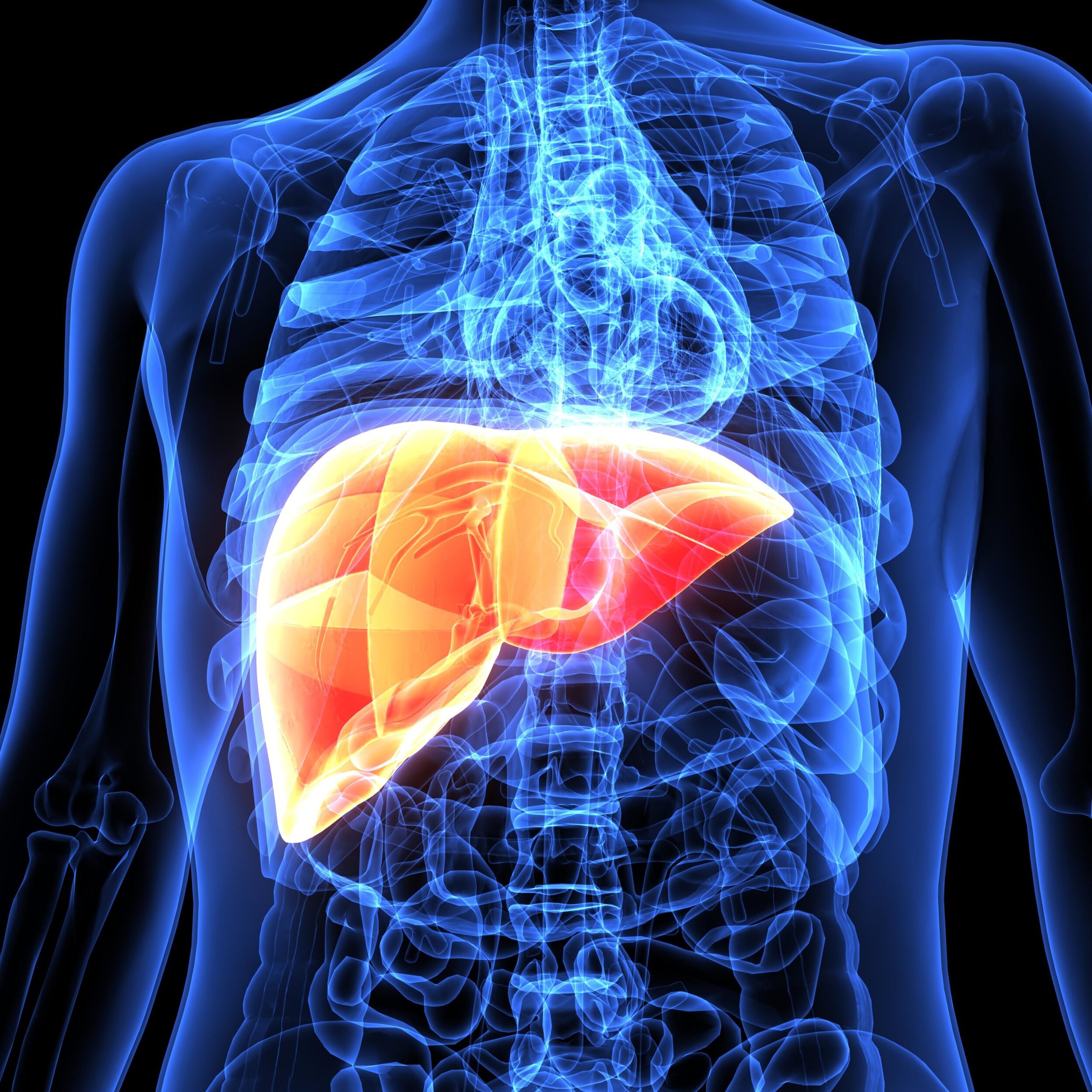
Consider that the body consists of about 70% water, an excellent conductor of sound…
“You can look at disease as a form of disharmony. And there’s no organ system in the body that’s not affected by sound and music and vibration.”
— Mitchell Gaynor, M.D.

Effects on the Human Body
Cymatics reveals the profound impact that sound frequencies can have on the human body and mind. This innovative field demonstrates how specific sound waves can create intricate geometric patterns in various mediums, including water, which constitutes a significant portion of the human body. By harnessing sound frequencies, cymatic therapy can promote cellular coherence and overall well-being. The vibrations produced by cymatic therapy devices, which include gongs, singing bowls, the didgeridoo, drums and other instruments, interact with the body's cells, encouraging them to resonate at their natural, healthy frequencies. This process can help restore balance and harmony within the body, leading to improved physical health and enhanced immune function (homeostasis).
The benefits of cymatic therapy extend beyond physical health, significantly impacting mental and emotional well-being. Research has shown that specific sound frequencies can reduce stress and anxiety by promoting relaxation and mental clarity. For instance, cymatic therapy has been found to lower cortisol levels, a stress hormone, and increase blood flow, which can help alleviate symptoms of anxiety and depression. Additionally, the therapy's ability to improve sleep quality and increase energy levels further supports mental health by ensuring that individuals are well-rested and more focused throughout the day.
Easy to apply Non-Invasive Therapy
By integrating cymatic therapy into a holistic health regimen, individuals can experience a profound sense of calm and emotional balance, making it a valuable and very accessible tool for managing modern life's stresses.
Moreover, cymatic therapy's non-invasive nature and minimal side effects make it a convenient and safe option for many people. The therapy's ability to stimulate the body's natural healing processes without the need for drugs or surgical interventions is particularly appealing. By using sound waves to create a near-optimal environment for healing, cymatic therapy supports the body's innate ability to repair and regenerate itself. This approach not only addresses physical ailments but also fosters a deeper connection between the mind and body, promoting overall health and well-being.
You can begin practicing it simply by covering your ears and humming. Feel the resonance in your skull cavities and experiment with lower and higher pitches. And if you want amplify your experience, put on some headphones and listen to one of our recordings here. Or, try out a live sound bath near you that features any of these - gongs, singing bowls, handpan, drums, flutes, chimes, shakers and vocalizations. You will love it.

“Everything owes its existence solely and completely to sound.”
— Peter Guy Manners | Biomedical Scientist
Cymatics beautifully demonstrated visually
See what sound does to matter…and again, imagine how sound affects your body on a cellular level....and note that we apply similar rubbing mallets on our gongs in our sound therapy events, the same as used in several of the videos below.
The higher the frequency, the more intricate and complex the patterns become.
